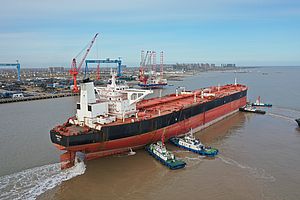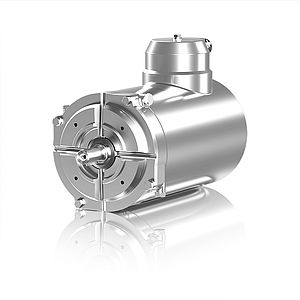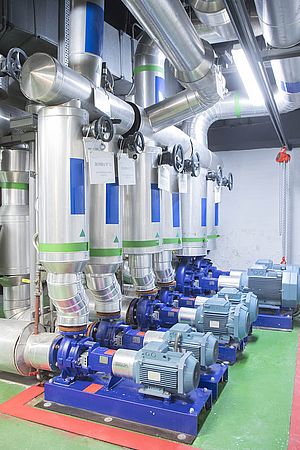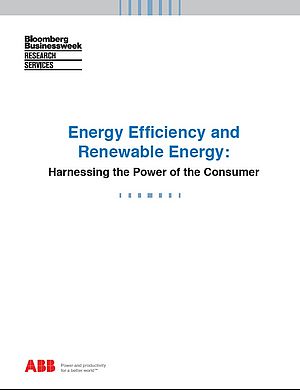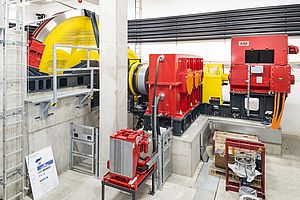Pump cavitation is one of the most potentially troublesome issues that can occur in the various fluid handling systems used by the food and beverage industry. It is triggered by a pressure drop in the liquid moving through the eye of the impellor in a centrifugal pump, causing bubbles to form.
As the pressure of the liquid continues to fluctuate and drop, the bubbles then collapse. The resulting rapid implosions produce a rumbling or cracking noise, sounding like rocks passing through the pump.
Cavitation shocks can cause serious mechanical damage to the pump’s impeller or its seals. The pump is not normally destroyed immediately, but its lifespan is shortened, its performance may suffer and there can be mechanical damage in other parts in the system as well.
For the food and beverage industry the problems associated with cavitation are not limited only to the potential loss of production and increased maintenance costs. It can also cause shockwaves in the liquid that lead to the formation of bubbles or foam when pumping fluids such as milk, lemonade or beer. For the dairy industry in particular, cavitation can also actually damage the milk-fat globules resulting in a poor quality product.
Drives Provide Process Insight
To safeguard liquid products during processing, we have developed sophisticated protection algorithms for our ACS880 variable speed drive (VSD) that is used widely in the food and beverage industry. This enables the VSD to pump liquids at an optimum speed and flow while adjusting instantly and automatically to any change in flow or draining vortex which may cause the onset of cavitation. The required level of performance and speed of response is made possible by two aspects of the ACS880: its core direct torque control (DTC) algorithm and the in-built PLC function that has direct, immediate access to the motor.
Processing delays from network lags are eliminated by avoiding the additional interface of either a plug-in controller card or an external PLC controlling the plant. Measuring torque on the pump shaft has enabled the development of better performing algorithms. These detect changes quicker and react immediately using direct torque control to slow the pump before it cavitates. In effect, the drive has now become a sensorless process monitoring and improvement tool.
Solving Cavitation Issues for Fonterra
One of the first applications for the ACS880 pump cavitation algorithm was for Fonterra, the global dairy nutrition company, owned by 10,500 farmers and their families. The trial, at the Longburn plant in Manawatu, offered the opportunity to further protect the quality of milk pumped from hundreds of tankers up and down New Zealand.
The aim of the trial was to help Fonterra understand how smart drives could control a draining vortex where swirling milk upset the flow. As part of the trial, a variety of factors were investigated from vibration analysis on the pumps to foaming tests on milk, which is a consequence of turbulence.
In many installations, the intention is for issues like cavitation to be addressed via the plant PLC controlling the process. Because PLC programs are often programmed to receive connected drive information, function blocks could be built to address cavitation. But, more often than not, this never gets addressed. As Fonterra has established, there are significant process advantages to be gained by using the ACS880 to solve cavitation locally within the drive.
With the PLC function built-in to the drive firmware, all pump control is completely native and completely sensorless. Potential flow issues are picked up immediately by changes in torque on the shaft rather than by sensors after they occur, and there is no lag from PLC scan times. Furthermore, since the customer-settable parameters are embedded inside the device no external HMI (human machine interface) is needed, which lowers the cost of the total solution.
The conclusion of the trial was that the ACS880 solution met Fonterra’s expectations, as it was able to address not just cavitation, but additional factors relating to pump performance within the drive, giving it more scope for development.
The Next Level – Detecting Cavitation Remotely With ABB Abilityä
We have now taken the capability for cavitation detection to the next level by offering it as part of a web-based Remote Condition Monitoring portal that visualizes the collected and reported VSD data. This provides access to essential parameters such as the rotational speed and torque of the motor and an indication of cavitation based on them. It also provides valuable insight on the state of the drive itself: the stress level, connection to the cloud, and the operating state of the pumping process compared to the ideal operating area.
The remote condition monitoring capabilities offered by the VSD means that the actual analysis can be carried out by ABB experts located in Finland, China and India, even when the drive installation is on the other side of the world. ABB has several advanced applications for remote monitoring, including the motors, VSDs and the data collection and analysis systems. These have been shaped into an overall portfolio known as ABB Abilityä for implementing Internet of Things capabilities into industrial systems.





